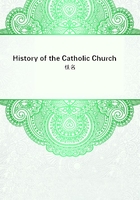
第322章
They expressed their willingness to present an address of loyalty from which the objectionable clauses should be omitted. But Walsh, dissatisfied with anything but a complete submission, shifted the ground of the debate, by endeavouring to secure the acceptance of the assembly of the pro-Gallican declaration of the Sorbonne (1663). Even still his efforts were far from being successful, and the meeting was dissolved by Ormond. The primate was kept a prisoner in Dublin for some months, and then transported to the Continent, while the other members present were obliged to make their escape from Ireland or to go into hiding. By orders of Ormond close watch was kept upon the clergy who sided against the Remonstrance, and many of them were thrown into prison.[71]
In 1669 Ormond was recalled, and after a short time Lord Berkeley was sent over as Lord Lieutenant. Though he was instructed to "execute the laws against the titular archbishops, bishops, and vicar-generals, that have threatened or excommunicated the Remonstrants,"[72] yet, as the personal friend of the Duke of York, and as one who knew intimately the king's own views, he acted in as tolerant a manner towards Catholics as it was possible for him to do considering the state of mind of the officials and of the Protestant bishops and clergy. From 1670 till the arrival of Ormond once more in 1677, though several proclamations were issued and though here and there individual priests were persecuted, Catholics as a body enjoyed comparative calm.
The Holy See took advantage of this to appoint to several of the vacant Sees. Amongst those appointed at this time were Oliver Plunket to Armagh (1669), Peter Talbot to Dublin, which had not been filled since the death of Dr. Fleming in 1655, William Burgat to Cashel (1669), and James Lynch to Tuam. Dr. Plunket had accompanied Scarampi to Rome (1645), where he read a particularly brilliant course as a student of the Irish College, and afterwards acted as a professor in the Propaganda till his nomination to Armagh. Dr. Talbot was born at Malahide, joined the Society of Jesus, was a close personal friend of Charles II. during the latter's exile on the Continent, and after the Restoration enjoyed a pension from the king. Shortly after his appointment an outcry was raised against him because he and his brother, Colonel Talbot, were supposed to be urging a re-examination of the Act of Settlement, and Charles II. was weak enough to sign a decree banishing him from the kingdom. He returned to Ireland only in 1677, the year in which Ormond arrived for his last term of office as Lord Lieutenant.
Already Shaftesbury's two subordinates, Titus Oates and Tonge, were concocting the infamous story of the Popish Plot in the hope of securing the exclusion of the Duke of York from the throne. In this plot, according to the account of its lying authors, the Catholics of Ireland were to play an important part, the Jesuits and the Archbishops of Dublin and Tuam being supposed to be particularly active. In October 1678 a proclamation was issued ordering all archbishops, bishops, vicars, abbots, and other dignitaries of the Church of Rome, and all others exercising jurisdiction by authority of the Pope, together with all Jesuits and regular priests, to depart from the kingdom before the 20th November, and all Popish societies, convents, seminaries, and schools were to be dissolved at once.[73]
This was followed by a number of others couched in a similar strain, and large numbers of priests were sent to the coast for transportation. The chapels opened in Dublin and in the principal cities were closed, and the clergy who remained were obliged to have recourse to various devices to escape their pursuers. Dr. Talbot was arrested and thrown into prison (1678), where he remained till death put an end to his sufferings in November 1680. Though both the king and Ormond were convinced of his innocence, yet such was the state of Protestant frenzy at the time that they dare not move a hand to assist him. Dr. Plunket, after eluding the vigilance of his pursuers for some time, was arrested in 1679. He was brought to trial at Dundalk, but his accusers feared to trust an Irish court, the case was postponed, and in the meantime his enemies arranged that he should be brought to London for trial. Every care was taken to obtain a verdict. The judges refused a delay to bring over witnesses for the defence, and made no attempt to conceal their bias and their hatred for the Catholic religion, the very profession of which was sufficient to condemn him in their eyes. He was executed at Tyburn (1681), and he was the last victim to suffer death in England on account of the plot of Oates and his perjured accomplices.[74] But in Ireland Ormond had no intention of dropping the persecution. Several of the bishops and vicars-general were arrested and either held as prisoners or banished, and spies were sent through the country to track down those who defied the proclamation of banishment by remaining to watch over their dioceses.